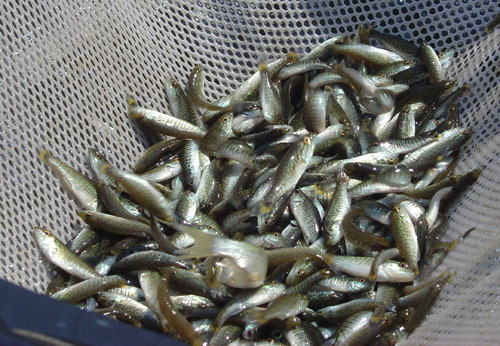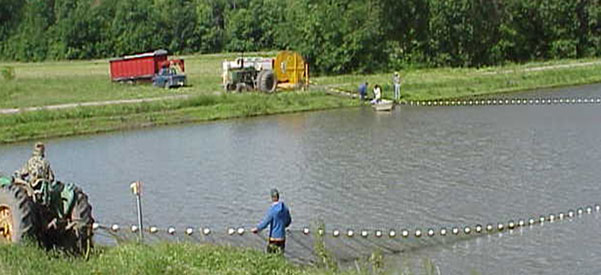Today’s article will be giving you the necessary information for stocking your pond.
Stages of Catfish Growth; What “Type” of Catfish to Stock

It’s important to realize that there are different stages of catfish growth. There are a lot of stages but, while being practical, here are the four main types you can stock in your pond:
- Fingerling (3 to 4 grams)
- Post-fingerling (4 – 6 grams)
- Juvenile (6 – 10 grams)
- Post-juvenile (10 grams and above)
I’m not sure if the above taxonomy is universal, but that’s how we know it over here in Nigeria; just tell everybody what stage of catfish you want and they’ll know what you mean.
To ensure the information is applicable to you irrespective of where you are, I included information about fish size in grams; an average, good fingerling catfish should be at least 3 – 4 grams in weight while an average, good, juvenile catfish should be at least 6 – 10 grams in weight.
Risk of Stocking Smaller Catfishes
It is very important to note that the smaller the catfish you stock, the higher the risk factor. By “risk factor” I’m referring to the following:
Mortality rate: Smaller catfishes are not as stable as more matured ones, which can be really rugged, so their mortality rate is higher.
I’ve seen a pond where 8,000 fingerling catfishes were stocked, only to come one day and find at least a thousand of them dead and floating on the water; this rarely happens with juveniles, but it is more common with fingerlings.
As a rule, my teacher tells me to expect at least 25% of fishes I stock to be dead within 6 months if I stock fingerling catfishes, with most of them dying within 3 weeks of stocking, while you can be sure less than 10% will be dead in 6 months if you stock juvenile or post-juvenile catfishes. All things being equal.
Feeding Difficulty: The smaller your catfish, the more intensive the feeding.
With juvenile or post-juvenile catfishes, you can easily get away with feeding them once a day right from the day you stock; with fingerling, or sometimes post-fingerling, catfishes, though, you need to feed them twice to thrice a day for a few weeks for optimal results.
You’ll also have to use the broadcast feeding system for longer compared to just spot feeding.
I’ll go into more details when my article on feeding goes live, butbroadcast feeding is basically you spreading feed all around the pond to ensure all the catfishes get fed while spot feeding is you feeding them on a spot, where they all come to eat.
Broadcast feeding can be more intensive, especially for bigger ponds and if you have a lot of ponds, and smaller fishes require more of it.
Maintenance: You also have to consider other factors such as changes in water quality, water pollution, predators as well as other factors when the fishes are smaller.
The bigger a catfish is, the more rugged it will be; I’ve seen a big catfish stay alive for up to 6 hours without being in any water; the catfish should be around 6 months old and around 2 kg. You can’t try that with a baby catfish; it will be dead in minutes.
My point is that the older a catfish is, the more mature it becomes and the smaller the risks you have to deal with.
So, if you want to stock, ensure you get the biggest fish you can get; by “biggest”, I’m referring to something in the juvenile/post juvenile stage. For me, anything that is 10 grams plus will be a win.
Putting the Juvenile Catfishes into Your Pond
Once you’ve gotten your juvenile catfishes, you want to make sure they are not stressed too much from the point of transportation to being introduced into your pond.
This means:
- You want to avoid exposing them to heat
- You want to avoid completely covering the container you put them into before they get to your farm
- You want to avoid shaking the container too much; if you have to transport them on bad road, drive slowly
Once the fishes get to your farm, the next step is to introduce them into your ponds.
Now, the worst way to go about this is to just pour/empty the container into your pond; that is faster, but it stresses your fishes. If you do this, you could get to farm the next day to find dead fishes floating on your pond.
The best way to go about this is to slowly put the container into the pond (that’s if it is small; if it is big, look for a small container and do this slow and steady), let the natural pond water mix a bit with the water you brought the fishes in for a while before finally releasing them into the pond.
Doing this ensures they don’t suddenly get introduced to the water, which probably has different temperature and qualities from the one they were brought in; remember that there were possibly thousands of them in a small container just awhile ago, only to be suddenly released into a large body of water that will seem like an ocean to them.
They get some time to adapt before being finally introduced into the massive water in the pond.
Doing this for approximately 30 seconds to 1 minute before releasing the fishes into the pond should be fine.
Conclusion
That’s it. Once you follow the above steps, you have successfully introduced your catfishes into the pond.
By following the above instructions, not only will you reduce the mortality rate of your baby catfishes but you’ll also position yourself to more efficiently take care of them.

